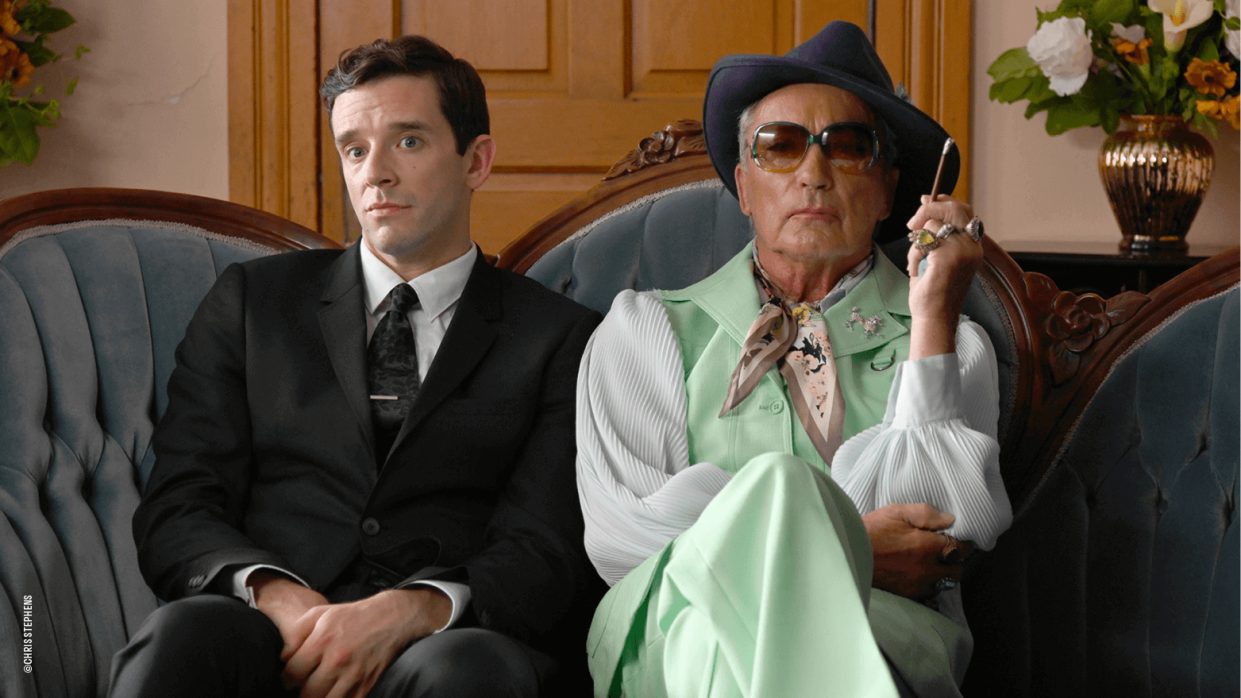New Film ‘Swan Song’ Celebrates an Aging Gay Man's Last Hurrah

- Oops!Something went wrong.Please try again later.
- Oops!Something went wrong.Please try again later.
Pat Pitsenbarger, a real-life hairdresser and queer legend in Sandusky, Ohio, was the first gay person filmmaker Todd Stephens ever knew. The director of Swan Song (and writer of the beloved ’90s flick Edge of Seventeen) hadn’t initially envisioned casting Udo Kier — the internationally acclaimed character actor known for working with Lars von Trier and Andy Warhol, in his film.
“Casting Udo was unexpected. I had known Udo from My Own Private Idaho, and I kept thinking, Pat is from West Virginia, and we have an actor with a German accent. When we were looking to cast Pat, we were looking for someone who wouldn’t play a clichéd gay man, someone who wouldn’t play him campy and over-the-top,” Stephens says. “Instead, Udo added even more mystique and elegance to the elusive Pat. As soon as I met Udo, I knew he was Pat.”
For Kier, who envelops himself in roles, playing the openly queer hairdresser who died in 2012 felt like a moment that had finally arrived. The same could be said for Stephens who’s finally able to tell the full story of his coming of age in Ohio.
The autobiographical Edge of Seventeen, released in 1998, marked Stephens’s feature debut as a screenwriter. But unlike with Swan Song, he was not the director of that personal movie. “It was my first film that I started directing, but trying to re-create my life in the ’80s had me lost in the details. And in 1998 [when queer-themed movies weren’t as supported], making this film, we had to use a fake script for Cedar Point [amusement park] to approve using [it] as a shooting location. So, even though this film was a reaffirming of my identity, we had to pretend, and I felt like I was going back into the closet.”
Stephens says Pat was originally intended to be a character in Edge of Seventeen, but he couldn’t find the right actor. Still, Pat remained in the back of his mind as a muse and role model for the filmmaker.
“Pat was there the first time I went to my first gay bar, the Universal Fruit and Nut Company. And seeing him there, he helped reaffirm my identity and I felt [I was] home. And ever since then I’ve always wanted to write Pat his own film,” Stephens says. Not only did he write it, but Stephens also got to direct Swan Song.
“Pat, in 1977, opened the first gay bar in Sandusky. He and his partner built that bar and built the queer community there. Without him and so many other older queer individuals, we wouldn’t be where we are today,” he says.
The narrative of mortality and finding meaning in the every day was integral to Kier’s performance as the “Liberace of Sandusky,” as Pat is called in the film.
“When Pat is talking about his partner dying of AIDS, I was growing up during that time. When we visit his partner’s grave, I did not want to see it until the scene. And when I saw it, I started crying. That was not acting.”

